How to Travel from Rome to the Amalfi Coast: A Comprehensive Guide

The Amalfi Coast, a breathtaking stretch of coastline along the southern edge of Italy’s Sorrentine Peninsula, is a dream destination that combines natural beauty with rich cultural heritage. With its charming villages perched atop steep cliffs, cascading lemon groves, and the mesmerizing azure waters of the Tyrrhenian Sea, it’s no wonder that this region is a must-visit when exploring Italy. Located approximately 172 miles (about 275 kilometers) south of Rome, the Amalfi Coast is accessible by various means of transportation, each offering its own unique experience. This comprehensive guide provides an in-depth look at the best ways to journey from Rome to the Amalfi Coast, ensuring a smooth and enjoyable trip filled with unforgettable moments.
Traveling by Train: The Fast and Scenic Option
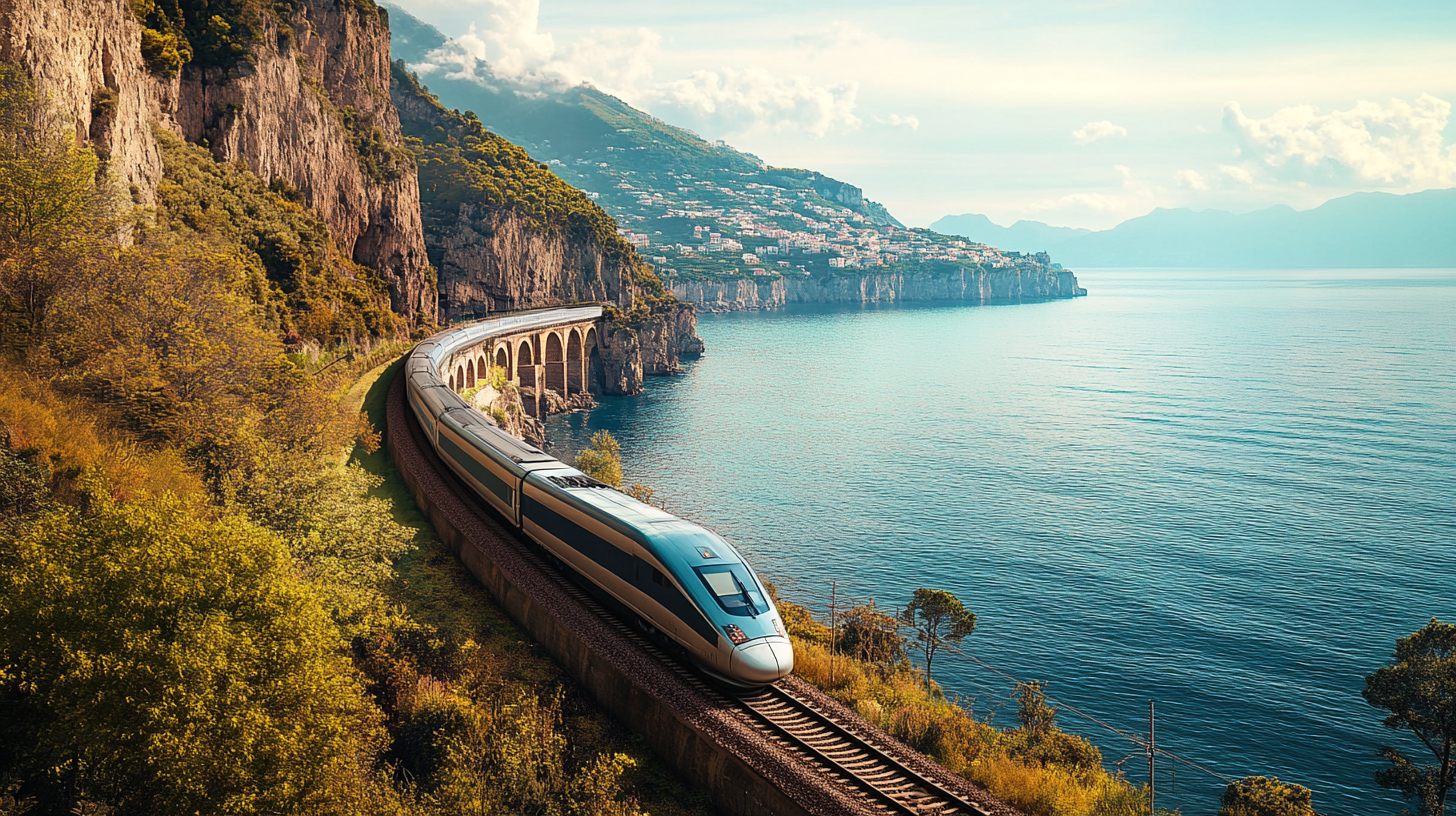
Embarking on a journey by train is one of the most efficient and enjoyable ways to reach the Amalfi Coast from Rome. High-speed trains whisk you through the heart of Italy, offering a comfortable and convenient travel experience. As you glide past rolling hills, lush vineyards, and quaint villages, you’ll get a glimpse of the Italian countryside’s timeless beauty.
From Rome to Naples or Salerno
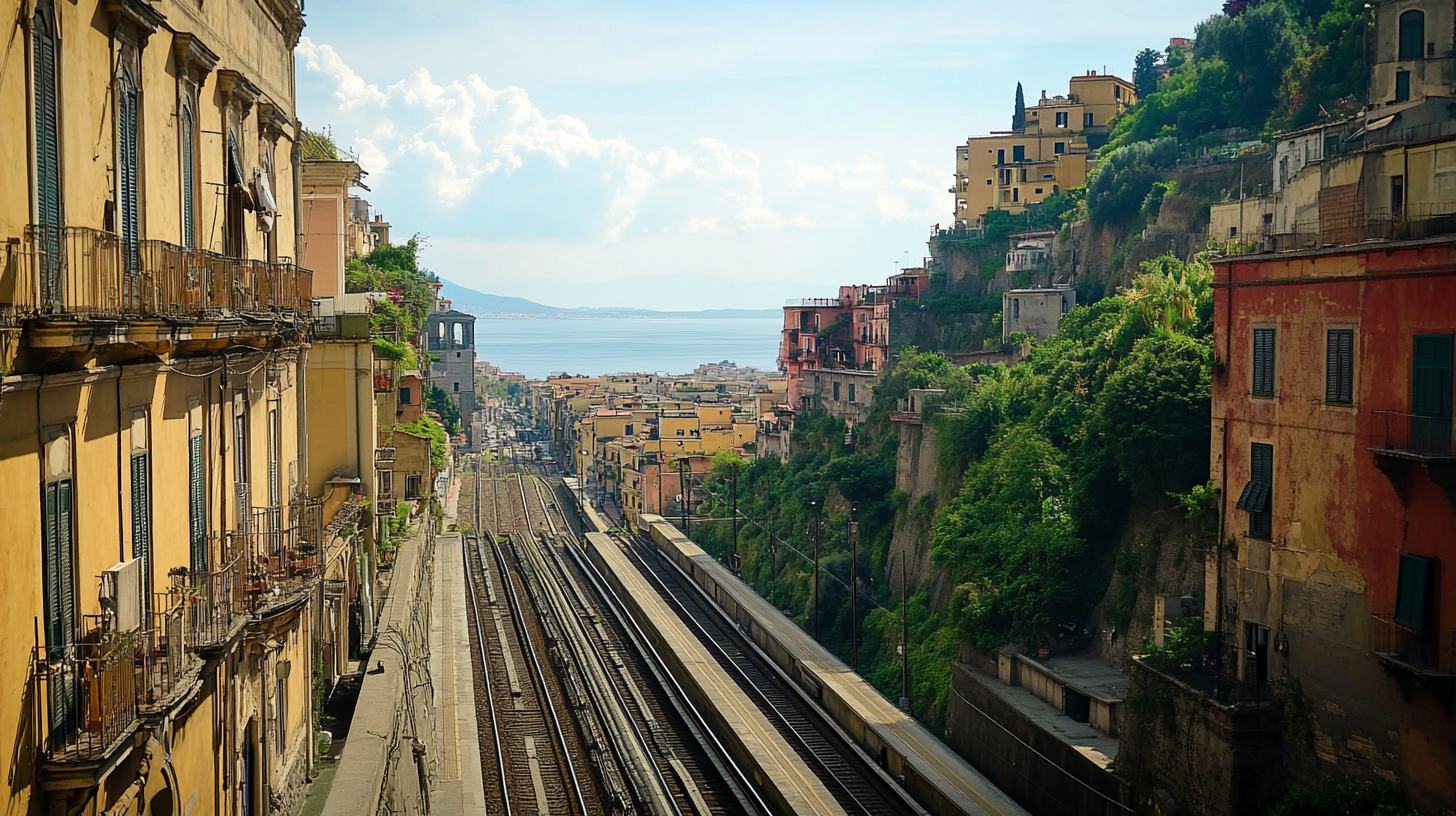
Trains depart frequently from Roma Termini, Rome’s central train station, heading south to either Napoli Centrale (Naples) or Salerno. Two primary train operators service these routes:
- Trenitalia: Italy’s renowned national rail service, offering high-speed options like the Frecciarossa and Frecciargento trains.
- Italo Treno: A private high-speed train operator known for its modern fleet and competitive pricing.
The high-speed train journey takes approximately 1 hour and 10 minutes to reach Naples and about 2 hours to arrive in Salerno. Ticket prices can vary significantly based on how far in advance you book, the class of service, and the time of travel. Early booking is recommended to secure the best rates, especially during peak tourist seasons. With up to 44 daily departures, travelers have ample flexibility to choose a departure time that fits their itinerary.
For those interested in exploring beyond the Amalfi Coast, Naples offers a wealth of attractions, from the historic UNESCO-listed city center to the world-famous archaeological sites of Pompeii and Herculaneum. Meanwhile, Salerno provides a less crowded alternative with a charming waterfront and easy access to ferries heading to the coast’s picturesque towns.
Connecting to the Amalfi Coast from Naples or Salerno
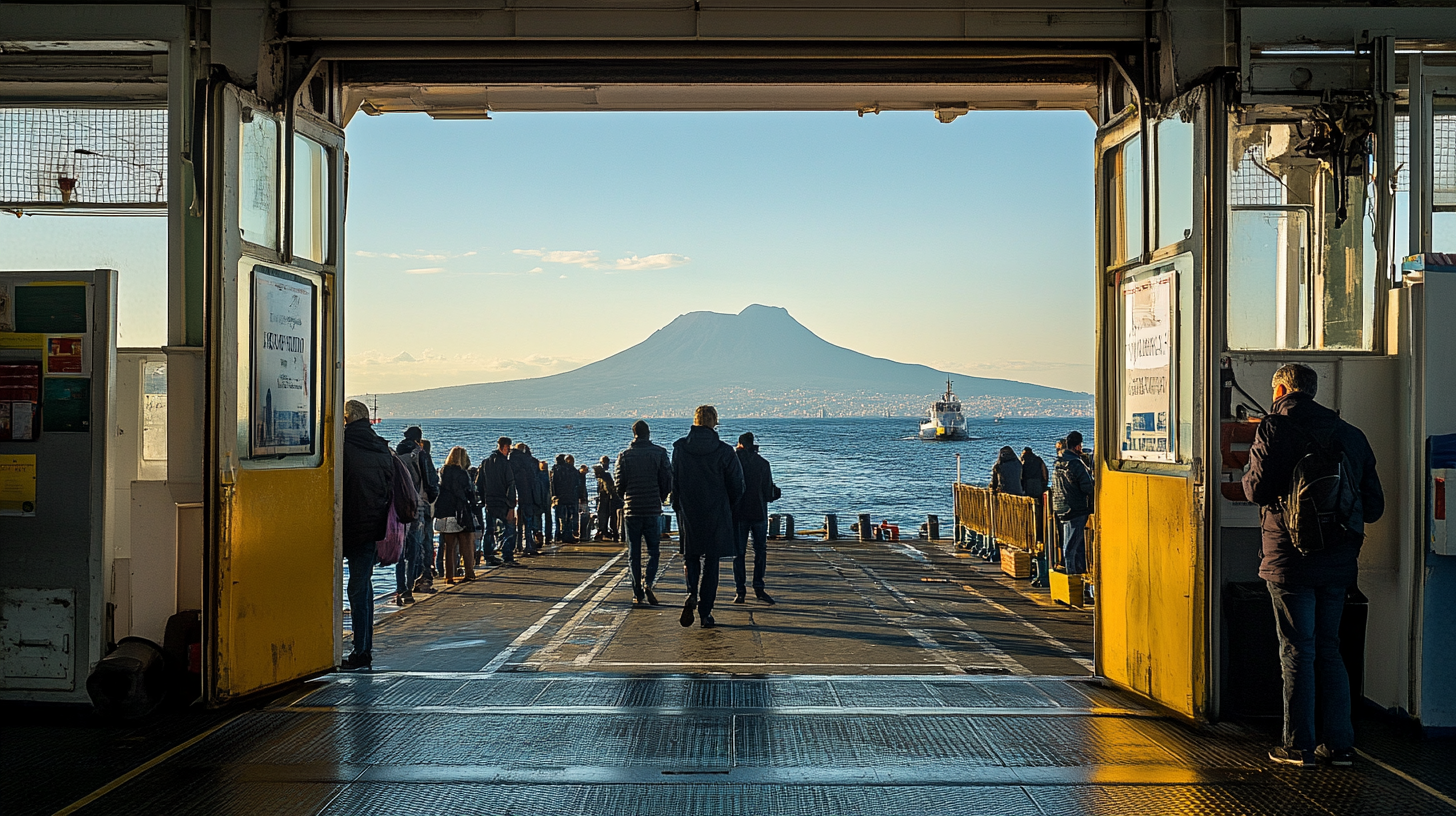
Upon arrival in Naples or Salerno, several options are available to continue your journey to the Amalfi Coast:
- Ferry Services: From Salerno, ferries are a particularly scenic and enjoyable way to reach coastal towns like Positano, Amalfi, and Maiori. The ferry ride offers panoramic views of the coastline, allowing you to witness the majestic cliffs and colorful villages from the sea. Keep in mind that ferry services are seasonal, typically operating from April to October, and are subject to weather conditions.
- Bus Connections: From Naples, take the Circumvesuviana local train to Sorrento, a charming town that serves as a gateway to the Amalfi Coast. From Sorrento, the SITA bus network provides regular services to destinations along the coast, including Positano, Praiano, and Amalfi. Alternatively, the Campania Express, a tourist-oriented train, offers a faster and more comfortable ride to Sorrento with fewer stops and air-conditioned coaches.
- Private Transfers and Shuttles: For added comfort and convenience, consider booking a private transfer or shared shuttle from Naples or Salerno directly to your accommodation on the Amalfi Coast. This option is especially advantageous if you’re traveling with heavy luggage or prefer door-to-door service without the hassle of navigating public transportation.
Planning your connection carefully is essential to ensure a smooth transition from the train to your final destination on the coast. Always check the latest schedules and consider factors like travel time, cost, and personal comfort when selecting your mode of transport.
Driving from Rome to the Amalfi Coast: Freedom with Scenic Rewards
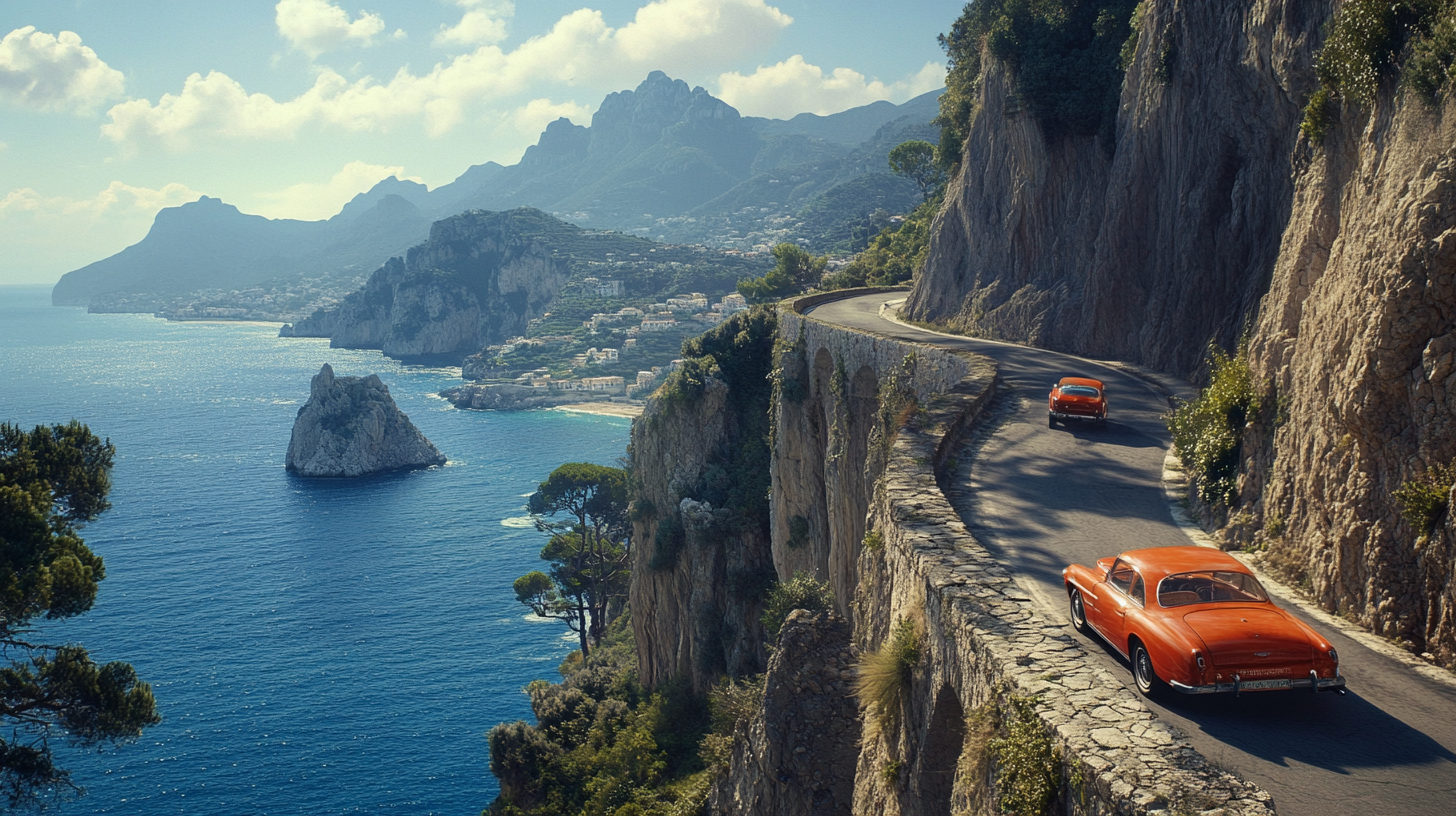
Opting to drive from Rome to the Amalfi Coast offers unparalleled freedom and the chance to explore Italy’s hidden gems at your own pace. The route takes you through diverse landscapes, from the rolling hills of Lazio to the historic regions of Campania. The journey, approximately 170 miles (around 275 kilometers), typically takes about 3 hours and 40 minutes under normal traffic conditions.
The Route and Highlights
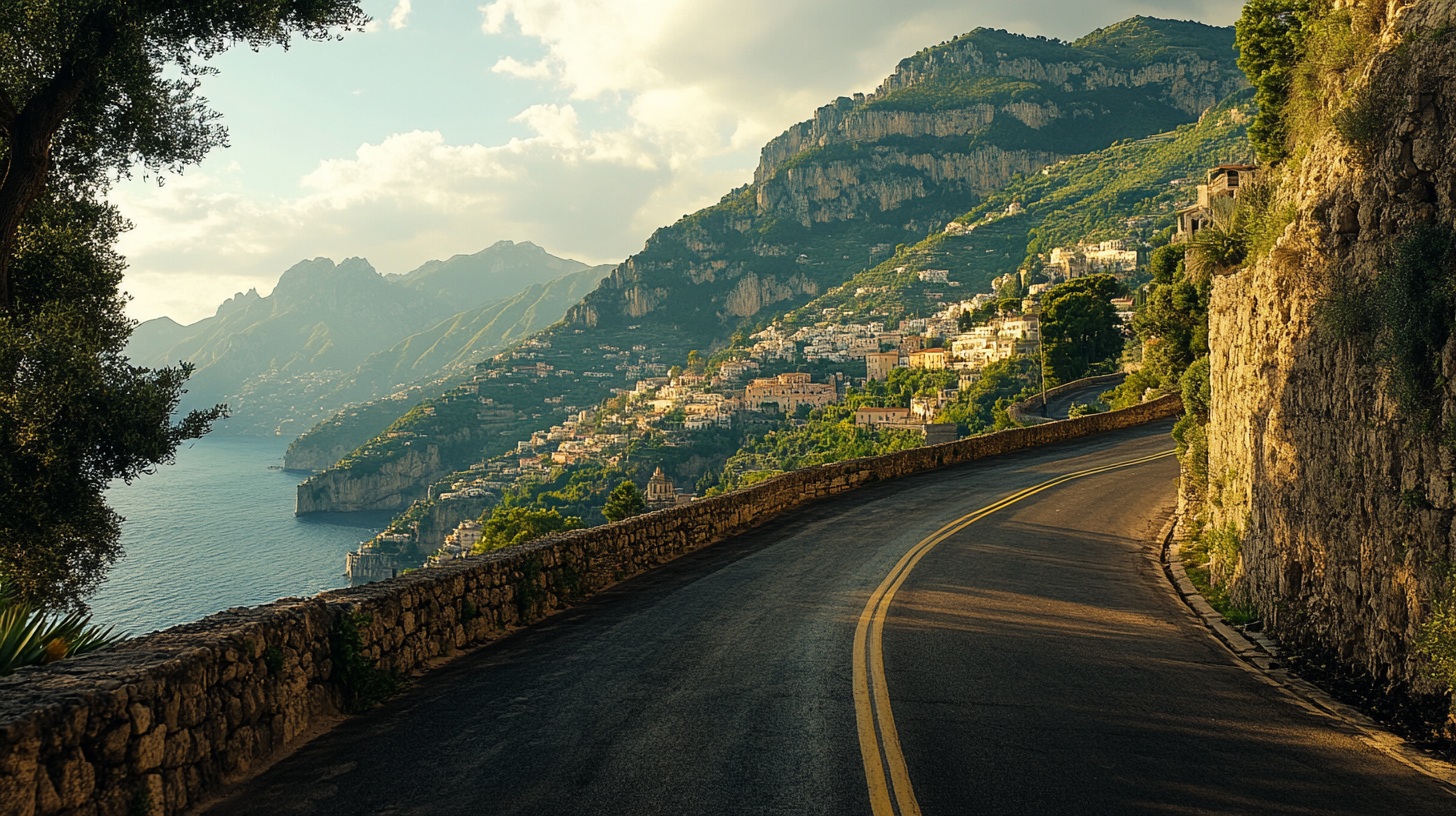
Your adventure begins as you navigate the A1 Autostrada southbound towards Naples, a modern highway that allows for efficient travel. Along the way, consider stopping at notable sites such as:
- Cassino: Visit the historic Monte Cassino Abbey, a rebuilt monastery with deep historical significance dating back to World War II.
- Capua: Explore ancient ruins and the Roman amphitheater, offering a glimpse into Italy’s storied past.
As you approach Naples, transition onto the A3 Autostrada towards Vietri sul Mare, the gateway to the Amalfi Coast. From there, the journey continues along the famed SS163 Amalfi Coastal Road, a breathtaking yet challenging drive known for its narrow passages, tight curves, and awe-inspiring vistas over the Mediterranean.
Important Considerations for Drivers
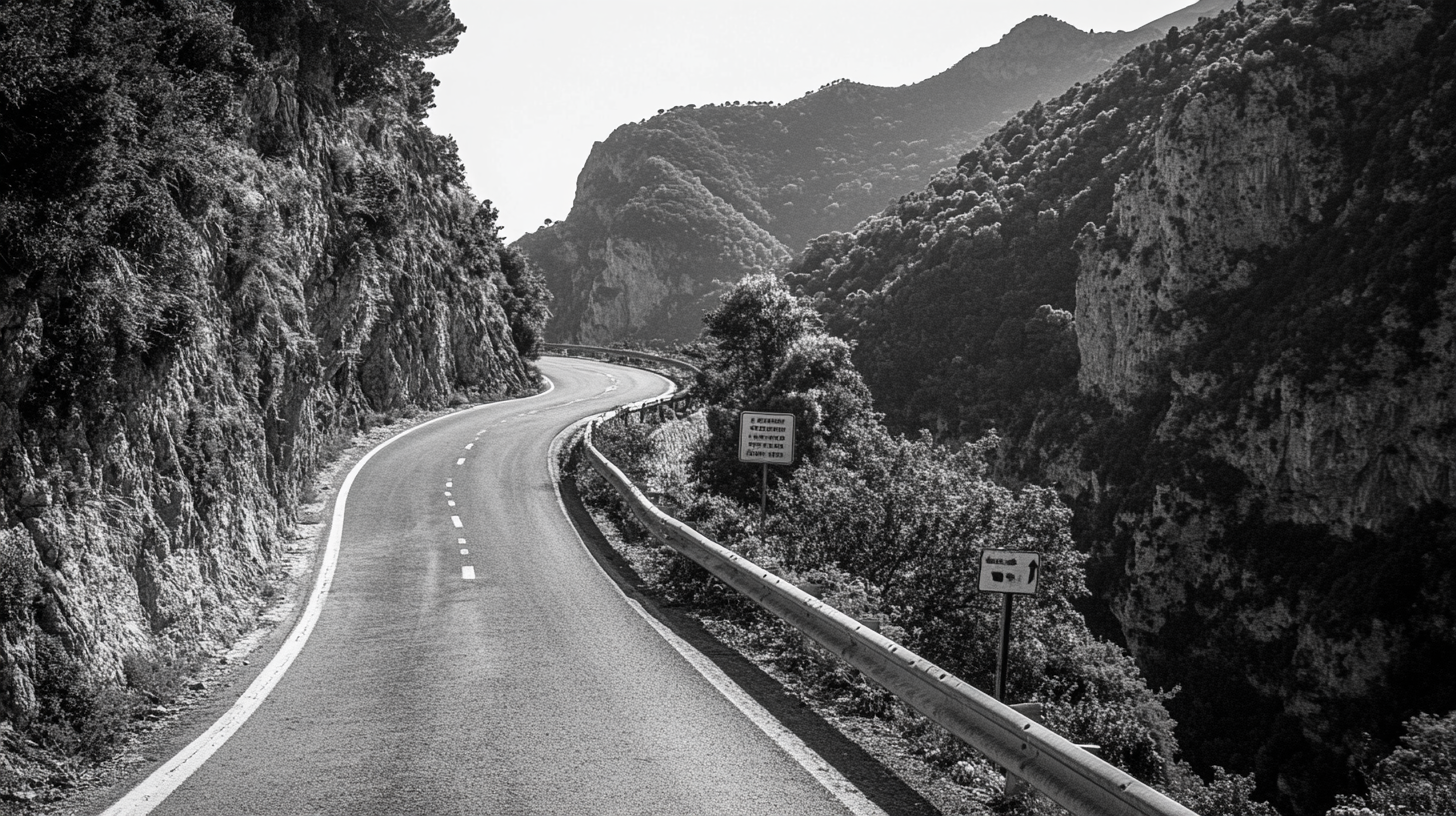
- Driving Conditions: The Amalfi Coast road is renowned for its dramatic scenery but requires attentive driving due to its winding nature and heavy traffic, especially during peak tourist seasons. Local drivers are accustomed to the conditions, so stay alert and patient.
- Vehicle Choice: Renting a smaller car can make navigating the narrow roads and tight parking spots more manageable. Manual transmission vehicles are common in Italy, so request an automatic if preferred, though availability may be limited.
- Parking Challenges: Parking in coastal towns can be scarce and expensive. Many villages have pedestrian-only zones, requiring you to park outside the central area. Consider accommodations that offer parking facilities or use designated public parking lots.
- International Driving Permit: An International Driving Permit (IDP) is required for non-European Union citizens renting a car in Italy. Ensure you obtain one before your trip to comply with local regulations.
- Tolls and Fuel Costs: The autostradas are toll roads, so be prepared with cash or a credit card. Fuel prices in Italy are higher than in some other countries, so factor this into your budget.
Driving provides the flexibility to create a personalized itinerary, perhaps venturing off the beaten path to discover lesser-known villages or enjoying leisurely stops to soak in panoramic views. With careful planning and consideration of local driving customs, it can be a rewarding way to experience the region.
Coaches and Buses: An Economical and Social Choice

For budget-conscious travelers or those who enjoy a more communal travel experience, coaches and buses present an economical alternative for reaching the Amalfi Coast from Rome. While the journey takes longer—approximately 5 to 6 hours—it offers the chance to mingle with fellow travelers and locals alike.
Understanding the Route and Experience

Several bus companies operate services from Rome to Naples, where you can connect to local buses heading to the Amalfi Coast. Companies like FlixBus and Marozzi offer comfortable coaches with amenities such as Wi-Fi, restrooms, and reclining seats. The route may include scenic stops or transfers in towns such as:
- Tivoli: Known for the stunning Villa d’Este and its Renaissance gardens.
- Caserta: Home to the magnificent Royal Palace of Caserta, a UNESCO World Heritage Site.
Upon reaching Naples or Sorrento, regional buses operated by SITA Sud connect you to various towns along the Amalfi Coast. This option is ideal for travelers with flexible schedules who appreciate the journey as much as the destination.
Tips for Coach Travel
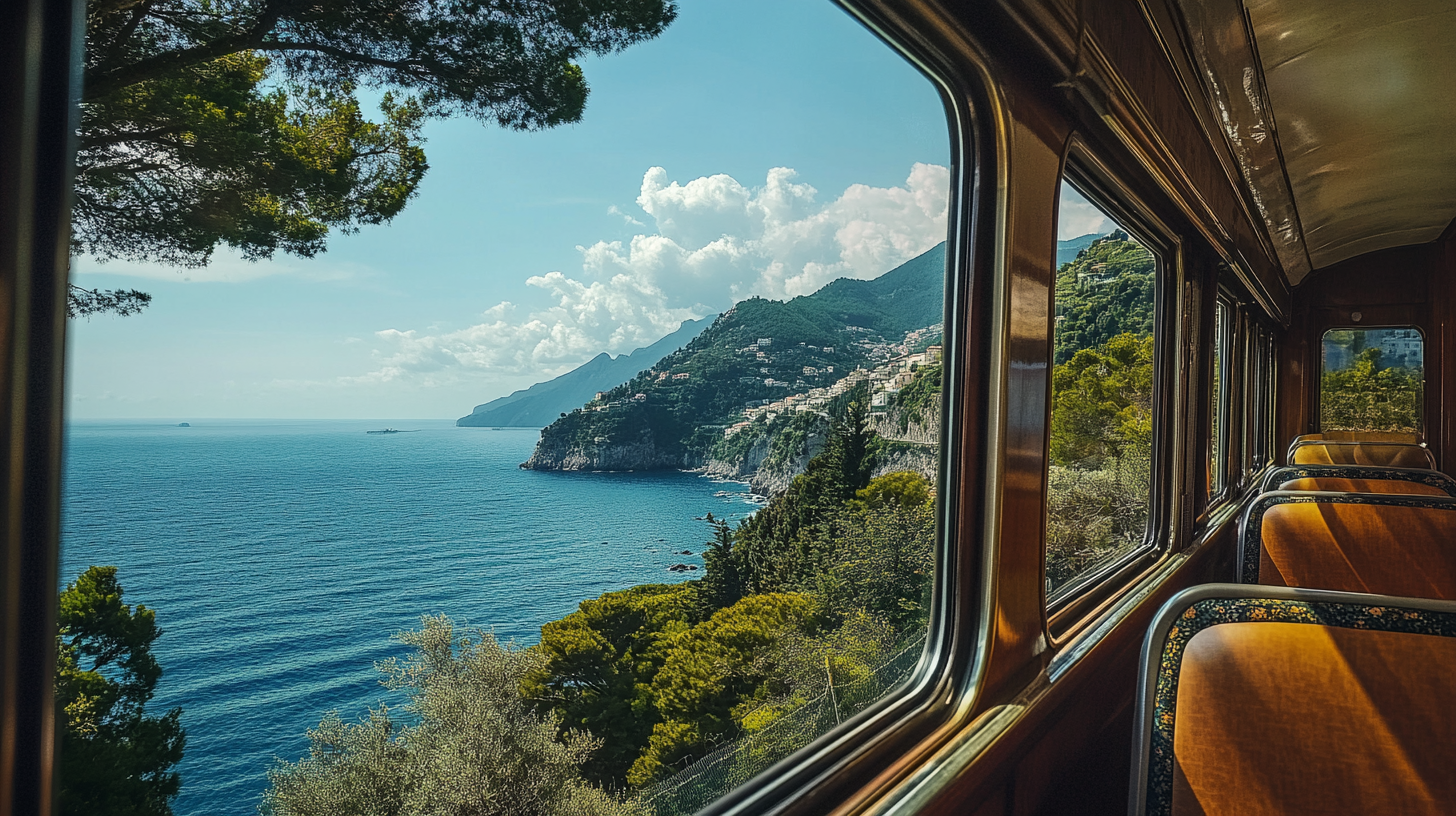
- Advance Booking: Purchase tickets online ahead of time to secure your seat, especially during peak travel periods.
- Travel Comfort: Bring snacks, water, and entertainment to make the longer journey more enjoyable.
- Stay Alert: Keep an eye on your belongings and be mindful of pickpockets in crowded bus stations.
For those who don’t mind the extended travel time, coaches and buses provide a cost-effective means to reach the Amalfi Coast while experiencing the Italian landscape up close.
Combining Train and Ferry: A Scenic and Memorable Journey
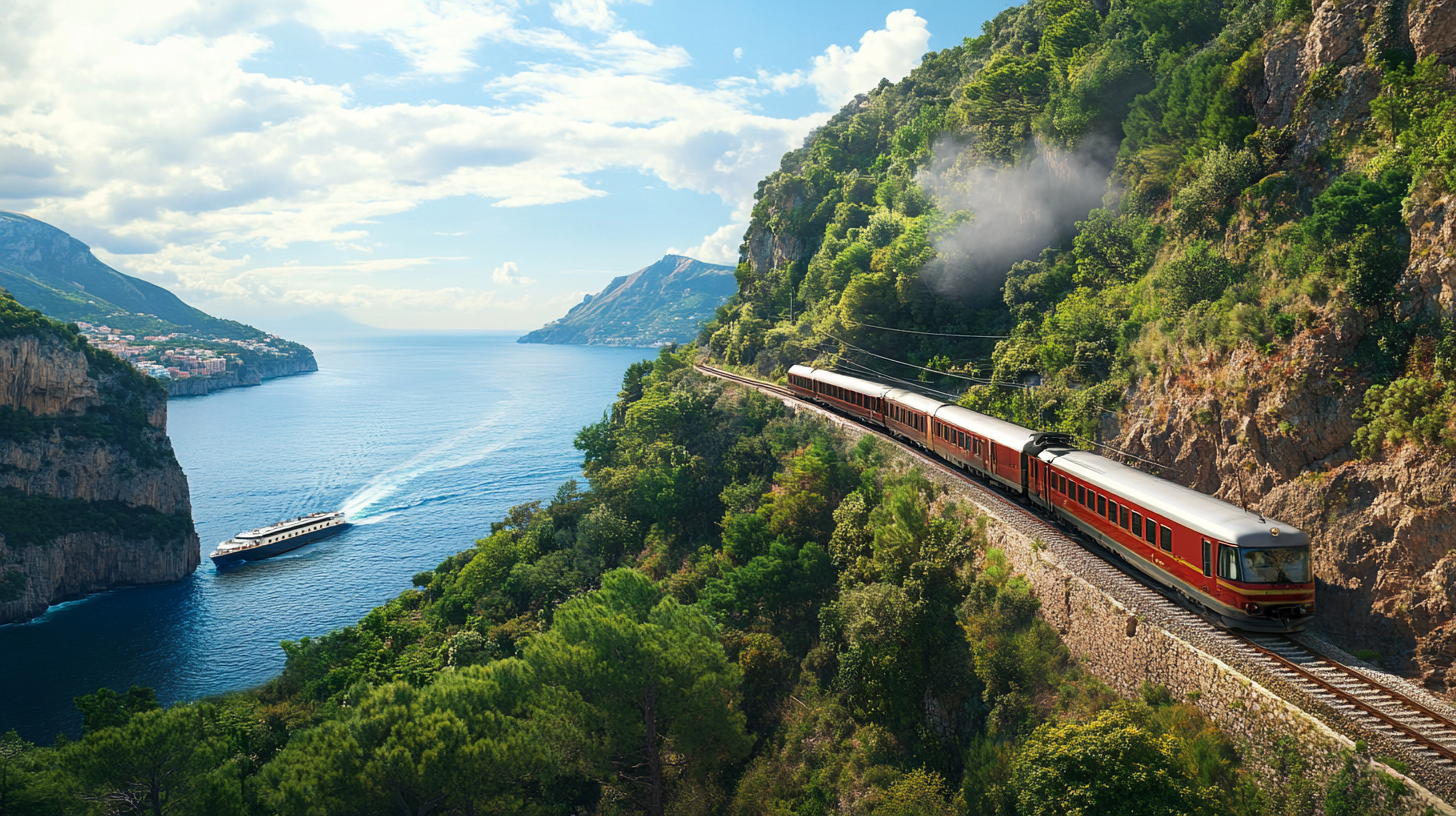
To fully immerse yourself in the natural beauty of the region, consider combining train and ferry travel for a truly scenic route to the Amalfi Coast. This method allows you to enjoy both the efficiency of Italy’s high-speed trains and the majestic views from the sea.
The Journey Explained

- High-Speed Train to Salerno: Depart from Roma Termini and arrive in Salerno after a comfortable ride of about 2 hours. Salerno’s station is conveniently located close to the harbor, making the transfer to the ferry straightforward.
- Ferry to Coastal Towns: Board a ferry operated by companies like Travelmar or Alilauro, which provide regular services to towns such as Amalfi, Positano, and Minori. The ferry journey not only serves as transportation but also as a mini-cruise along one of the world’s most stunning coastlines.
This route is both efficient and enchanting, offering seamless connections and the chance to capture incredible photos of the coastline’s dramatic cliffs and vibrant villages from the water.
Seasonal Considerations
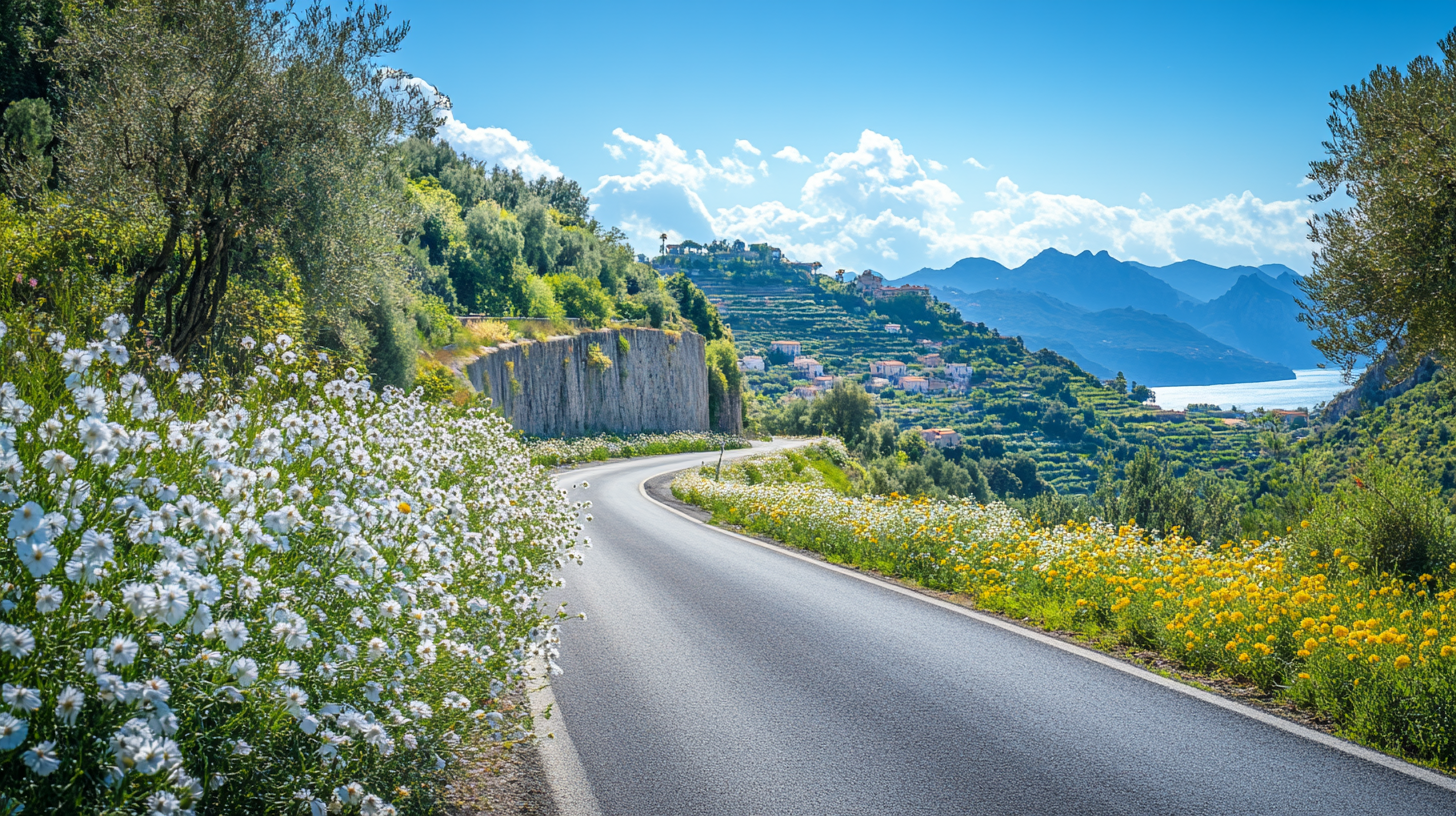
Ferry services are typically available from April through October, aligning with the tourist season and favorable weather conditions. During the off-season, ferry schedules are limited or suspended, so alternative transportation methods should be planned accordingly.
For up-to-date ferry schedules and ticket information, consider checking Current Ferry Schedules for the Amalfi Coast .
Day Trip Considerations: Possibilities and Limitations
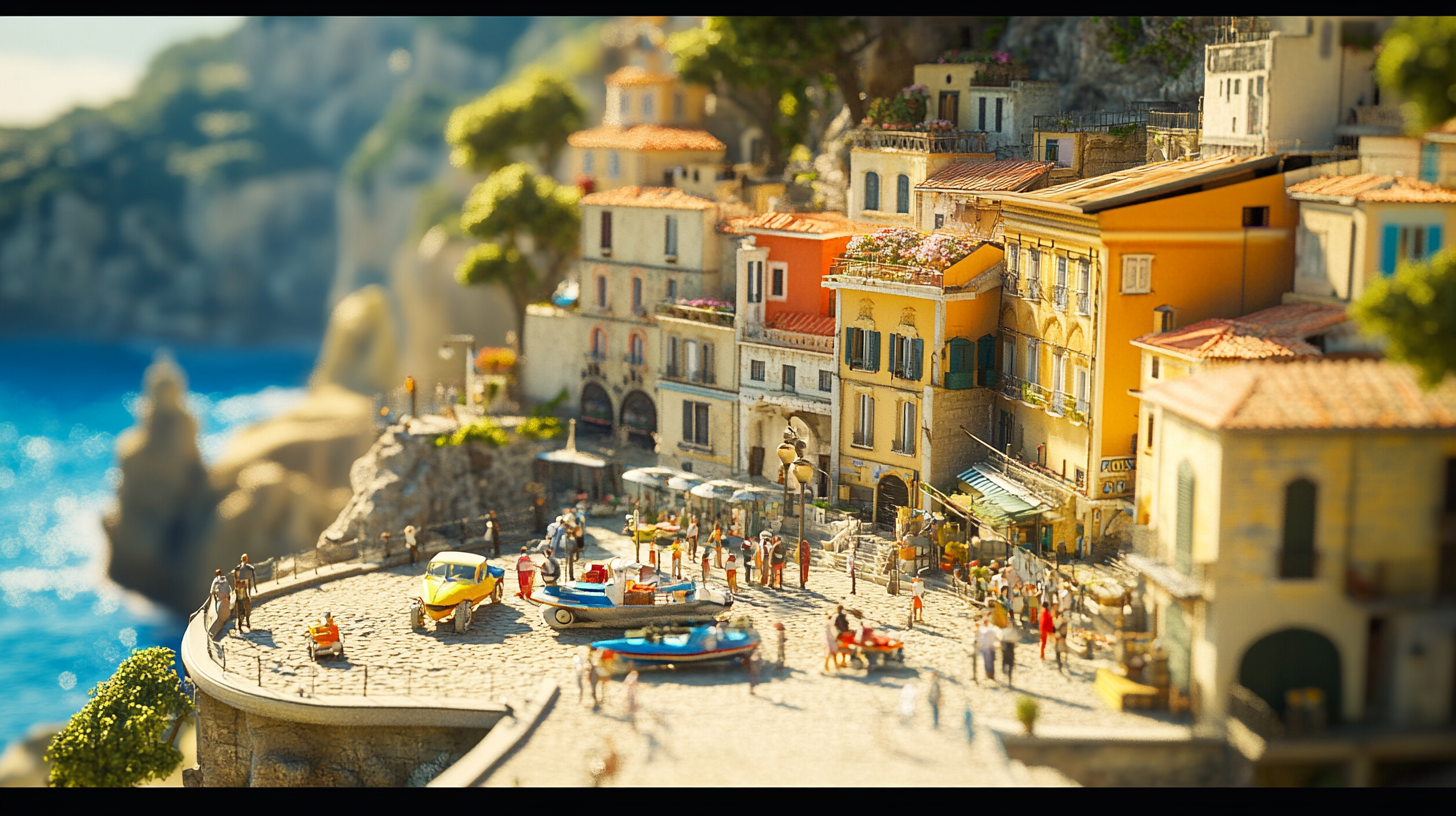
While the Amalfi Coast is deserving of a leisurely visit, some travelers may consider a day trip from Rome due to time constraints. Covering approximately 144 miles (about 232 kilometers), a day trip is feasible but requires meticulous planning to maximize your experience without feeling overly rushed.
Making the Most of a Day Trip
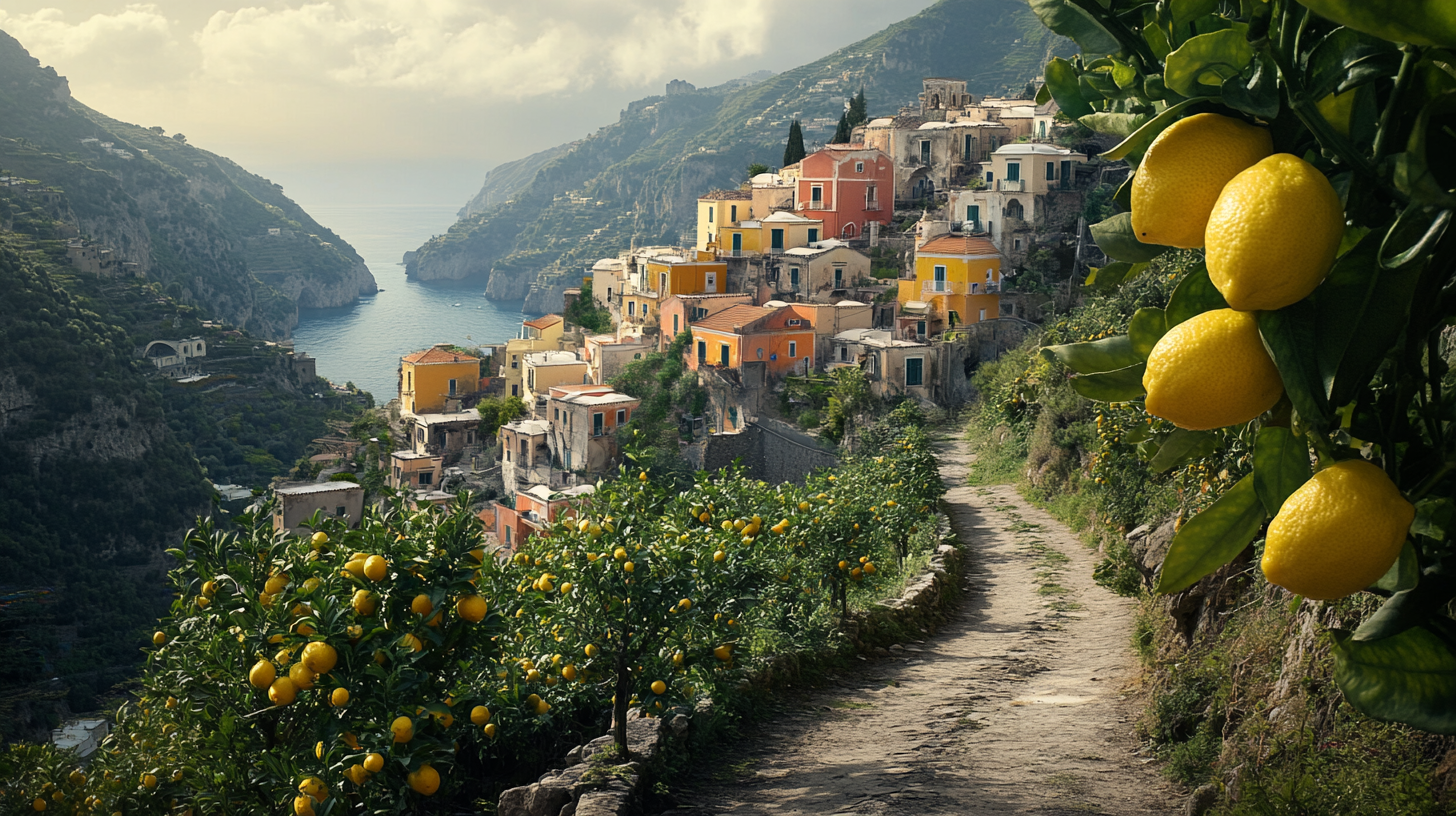
- Early Departure: Start your day as early as possible by catching the first high-speed train to Naples or Salerno. This strategy provides more time on the coast and reduces the stress of tight schedules.
- Guided Tours: Consider booking a guided tour that handles transportation logistics, ensuring a seamless experience. Tours often include highlights like visits to Positano, Amalfi, and Ravello, and may provide informative commentary along the way.
- Priority Activities: Focus on one or two key experiences, such as exploring the town of Amalfi and enjoying a seaside lunch, to avoid overextending your itinerary.
Pros and Cons of a Day Trip
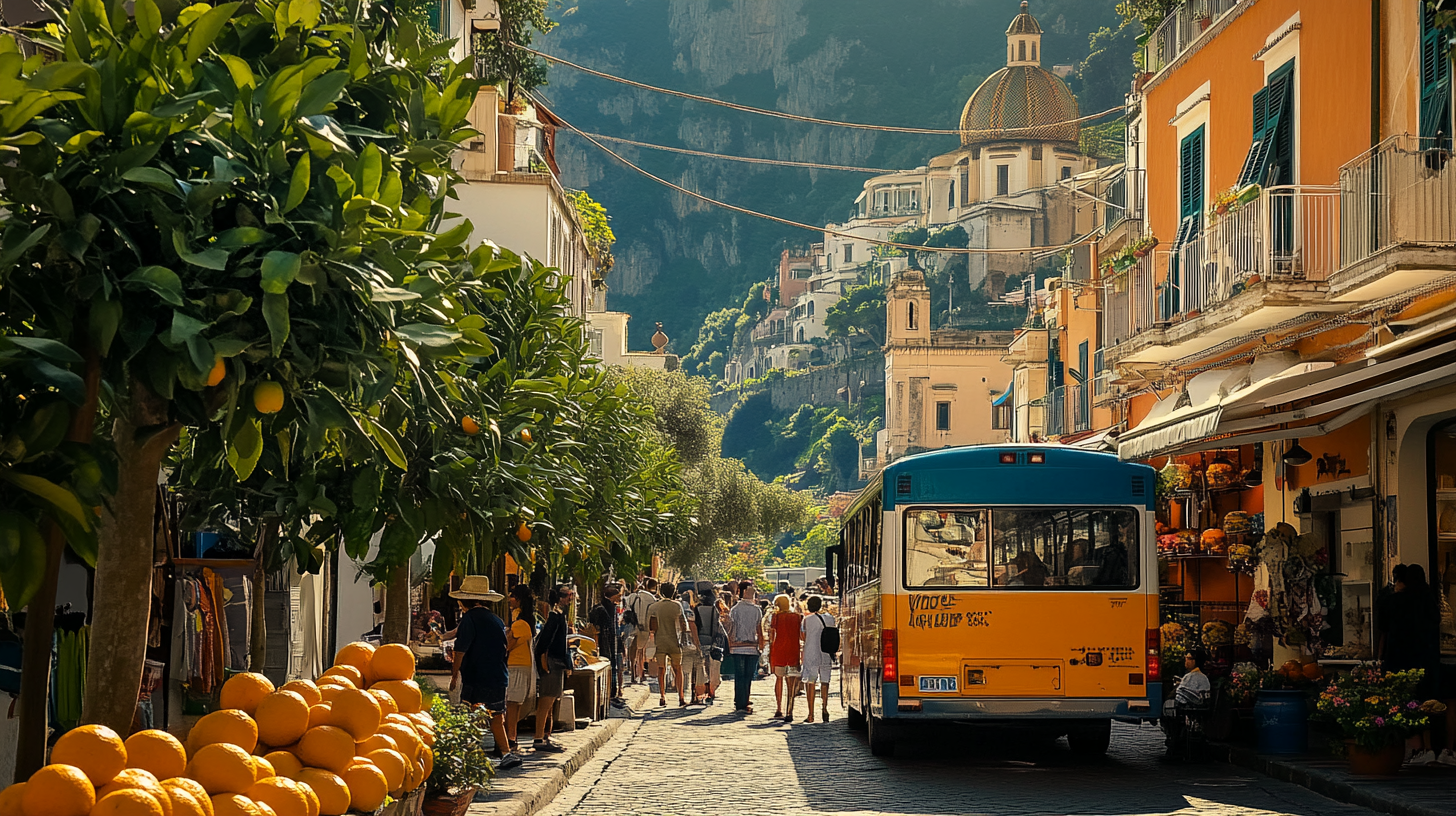
- Pros:
- Opportunity to witness the Amalfi Coast’s stunning landscapes and iconic sites within a limited timeframe.
- Convenient for travelers with packed schedules or those wanting a taste of the region before planning a longer stay in the future.
- Cons:
- Limited time to fully explore and appreciate each location.
- Potential for fatigue due to extensive travel in a single day.
- Transportation delays or crowded venues may impact the overall experience.
If a day trip aligns with your plans, ensuring efficient use of time and setting realistic expectations will help you savor the essence of the Amalfi Coast.
Best Time to Visit: Seasons, Weather, and Local Insights
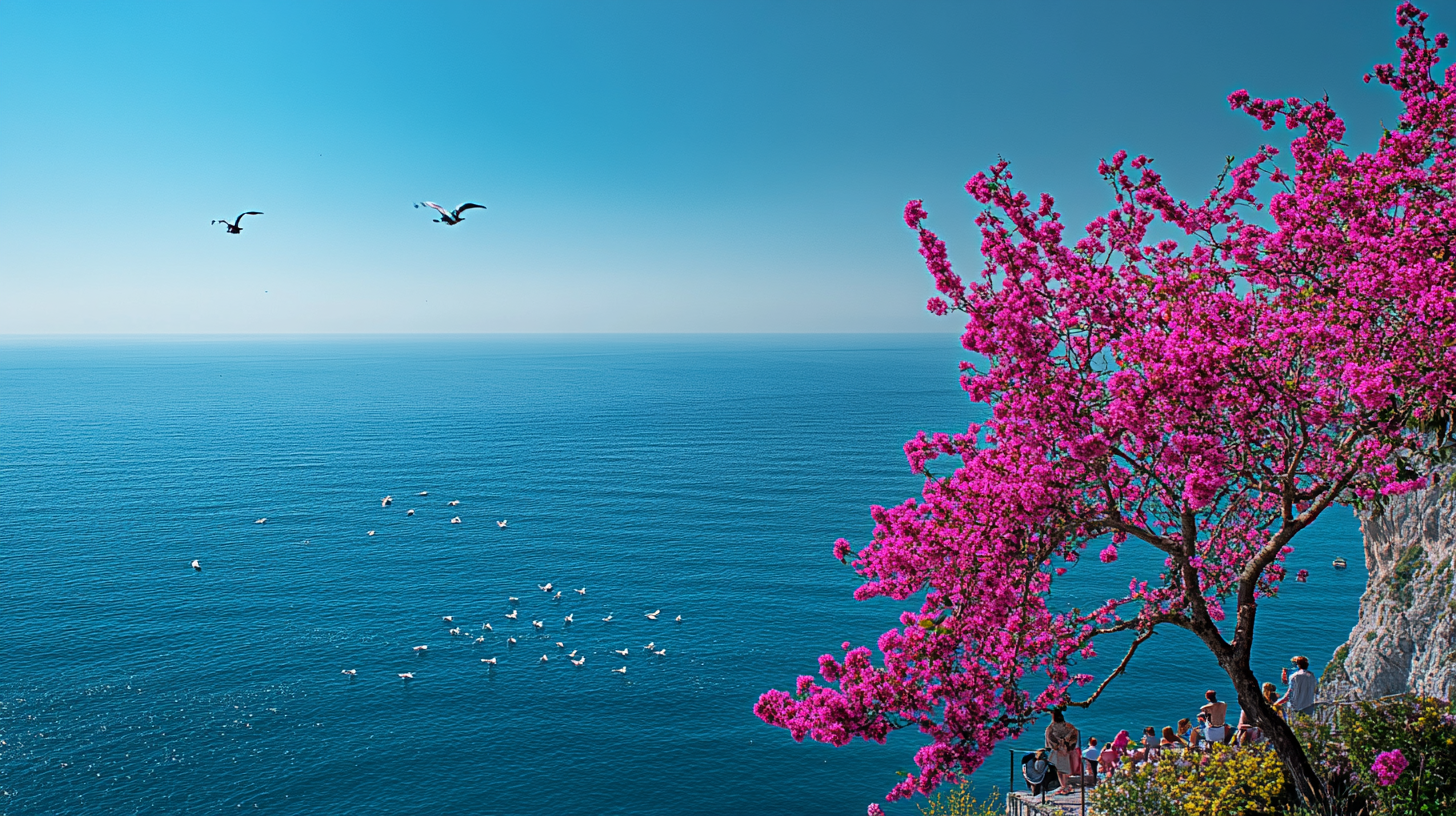
The Amalfi Coast offers a different charm with each season, influencing factors like crowd levels, weather conditions, and available activities. Understanding these seasonal variations can help you plan a trip that suits your preferences.
Peak Season: Late Spring to Early Fall
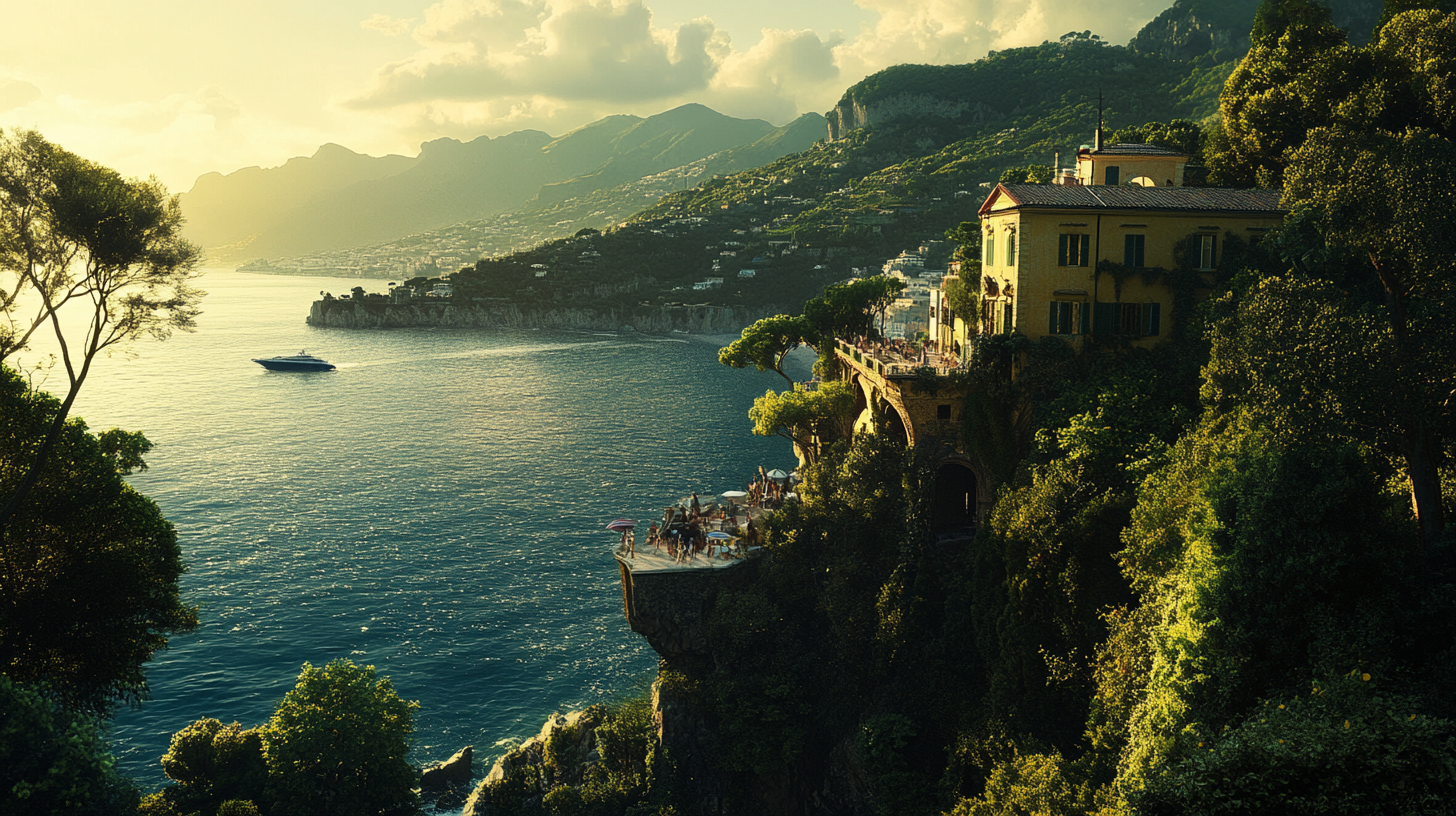
The period from May to September is considered peak season, characterized by warm temperatures, vibrant festivals, and bustling streets filled with visitors. The summer months, especially July and August, see the highest tourist traffic. During this time:
- Weather: Sunny days with temperatures averaging between 77°F (25°C) and 86°F (30°C), ideal for beach activities and boat excursions.
- Festivals: Experience local culture through events like the Festa di Sant’Andrea in Amalfi or the Luminaria di San Domenico in Praiano.
- Accommodation: Hotels and rentals tend to fill up quickly, and prices are at their peak. Booking several months in advance is advisable.
Shoulder Seasons: Spring and Autumn
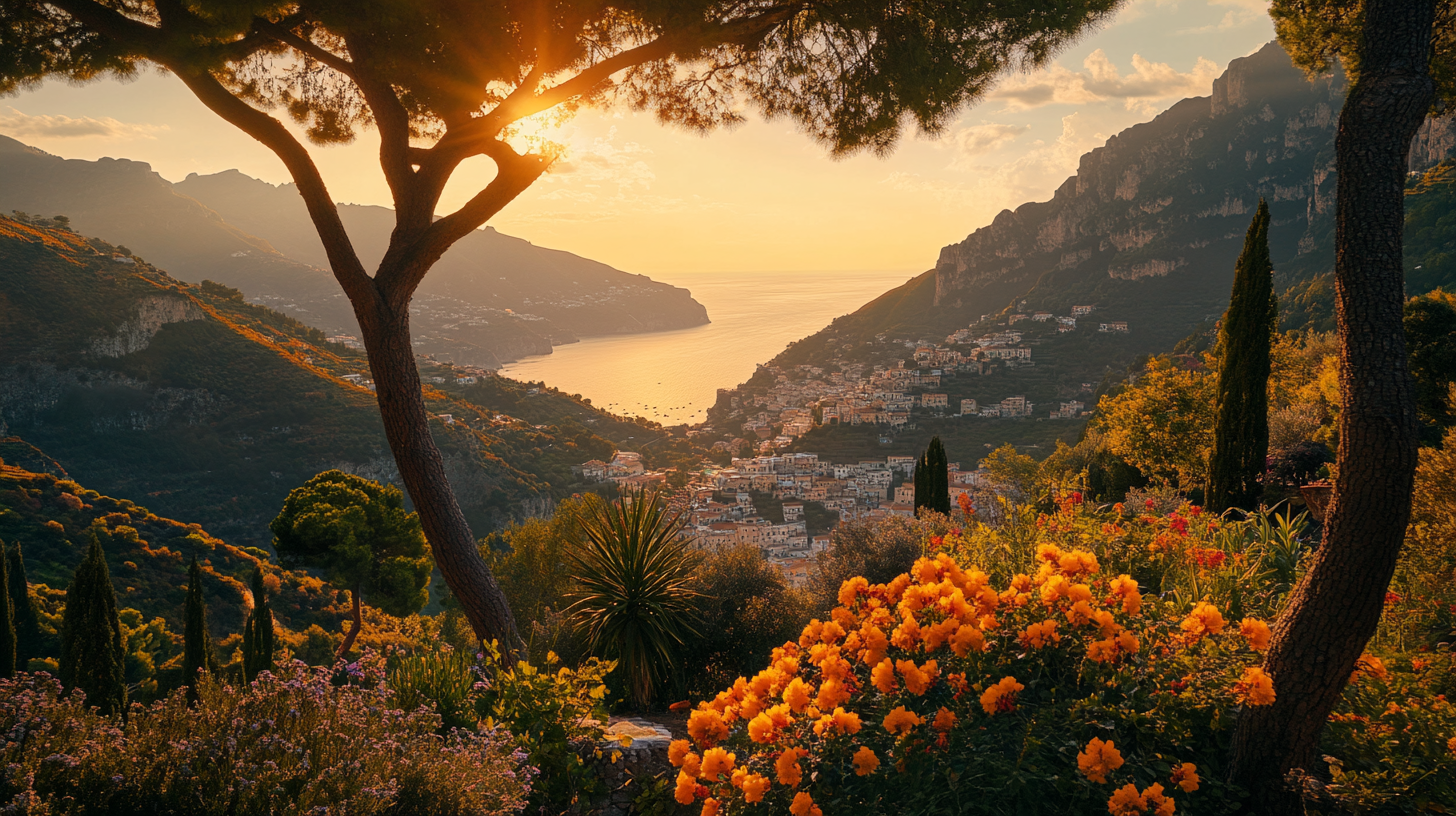
Visiting during April to early June or September to October offers a balance of pleasant weather and fewer crowds. These periods are ideal for:
- Outdoor Activities: Mild temperatures are perfect for hiking trails like the famous Path of the Gods (Sentiero degli Dei), offering panoramic views without the intense summer heat.
- Cultural Experiences: Engage more authentically with local life as villages are less crowded, allowing for leisurely exploration of historical sites and markets.
- Cost Savings: Accommodation and travel costs may be lower compared to peak season, providing better value for money.
Winter Months: A Quiet Retreat

From November to March, the Amalfi Coast enters a quieter phase. While some hotels and restaurants close for the season, this time offers:
- Tranquility: Enjoy the serene beauty of the coastline without the usual tourist bustle.
- Local Interactions: Greater opportunity to connect with residents and experience daily life in the coastal towns.
- Limitations: Be aware that ferry services are limited, and some attractions may have reduced hours.
For more insights on seasonal travel, check Seasonal Travel Guide to the Amalfi Coast .
General Travel Tips

- Advance Reservations: Whether traveling during peak or off-peak seasons, booking transportation and accommodations in advance secures your preferences and may offer cost benefits.
- Utilize Technology: Download travel apps for schedules, ticket bookings, and navigation. Apps like Trenitalia, Italo, and local transit guides can streamline your journey.
- Cultural Etiquette: Embrace local customs, such as the afternoon riposo (siesta), when shops and businesses may close for a few hours. Learning basic Italian phrases can enhance your interactions.
- Pack Accordingly: Bring comfortable walking shoes for cobblestone streets and steps, and consider layers to adjust to varying temperatures throughout the day.
Exploring the Amalfi Coast: Must-See Towns and Activities

The allure of the Amalfi Coast lies not only in its natural beauty but also in the unique character of its towns, each offering distinct experiences that cater to a variety of interests.
Positano: The Vertical Wonderland

Known as the jewel of the Amalfi Coast, Positano dazzles visitors with its pastel-colored houses cascading down the cliffs to the sea. Highlights include:
- Beach Life: Relax on Spiaggia Grande or the more secluded Fornillo Beach, accessible via a picturesque coastal path.
- Shopping: Explore boutique shops offering handmade sandals, ceramics, and the town’s signature linen clothing.
- Culinary Delights: Indulge in local cuisine at seaside restaurants, savoring dishes like fresh seafood pasta accompanied by stunning sunset views.
Amalfi: A Blend of History and Charm
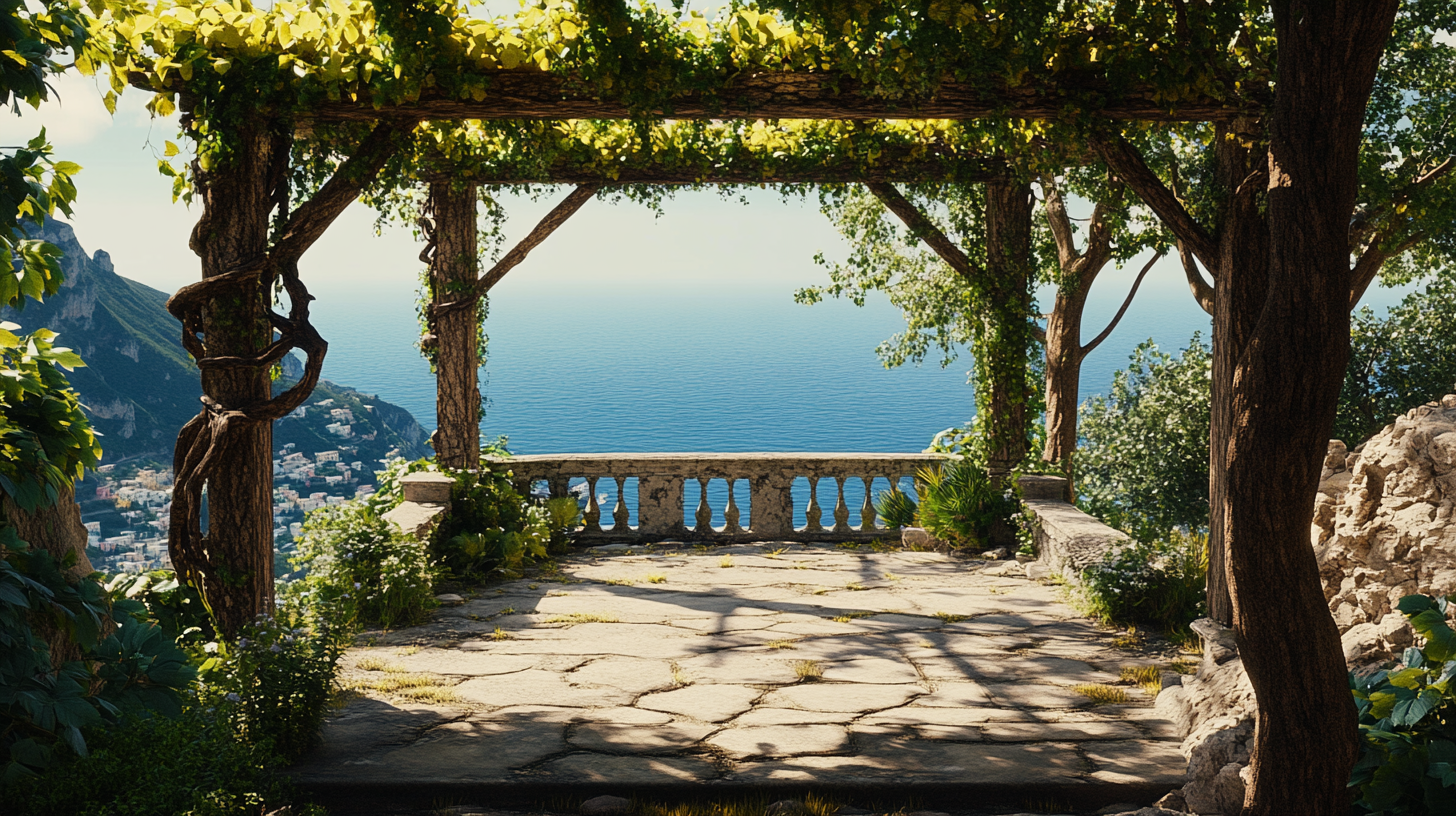
Once a powerful maritime republic, Amalfi offers a rich historical tapestry set against a tranquil backdrop. Key attractions include:
- Amalfi Cathedral (Duomo di Amalfi): Admire the stunning Arab-Norman architecture and intricate mosaics of this iconic 9th-century cathedral.
- Paper Museum (Museo della Carta): Discover the town’s legacy of fine paper production dating back to the Middle Ages.
- Piazza del Duomo: Soak in the atmosphere of the main square, enjoying a gelato or espresso at a local cafe.
Ravello: The Terrace on the Infinity
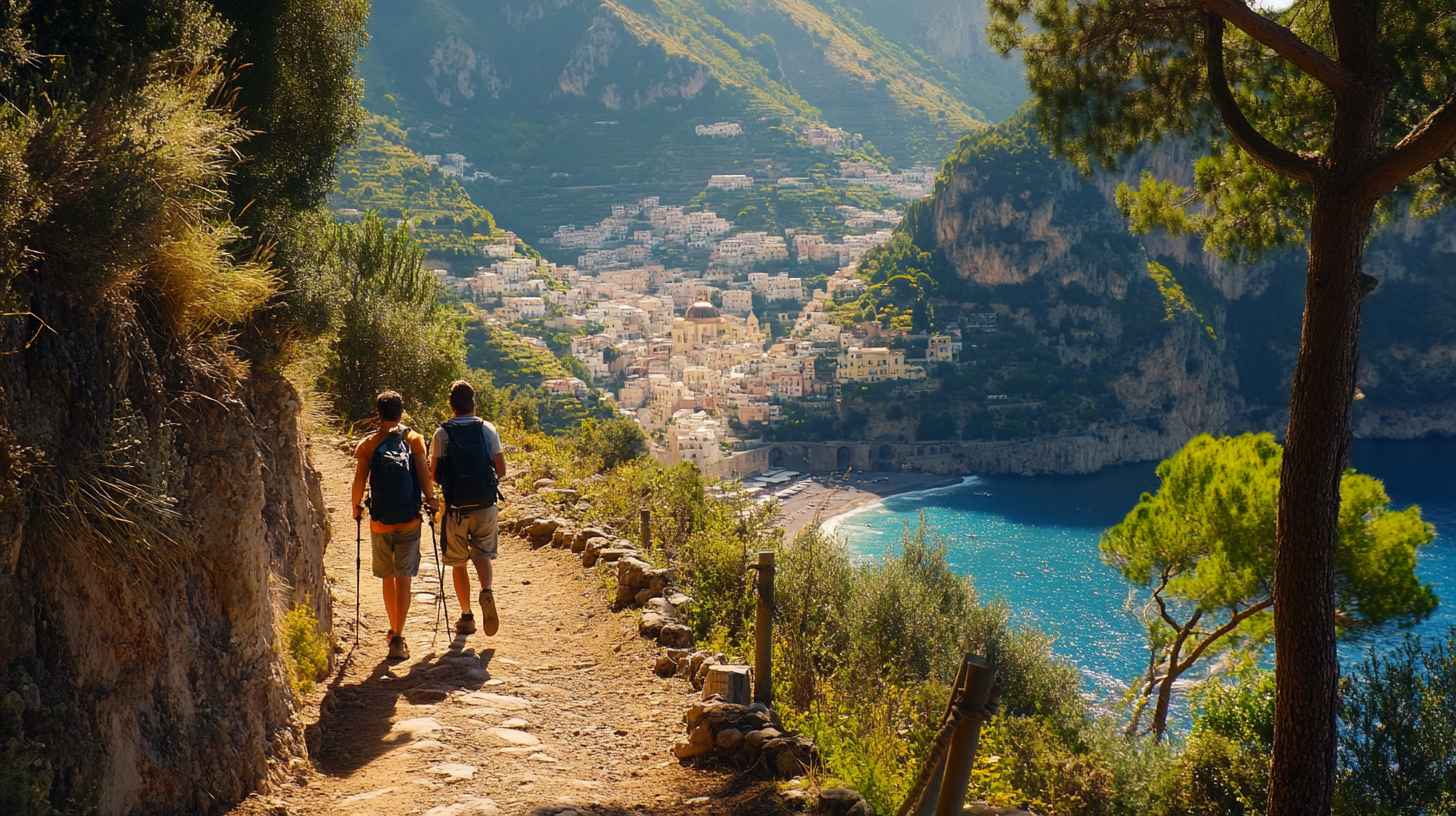
Perched high above the sea, Ravello is renowned for its tranquil gardens and cultural events. Don’t miss:
- Villa Rufolo: Wander through lush gardens that inspired composers like Richard Wagner, offering panoramic views of the coastline.
- Villa Cimbrone: Visit the Terrazza dell’Infinito (Terrace of Infinity), where marble busts line a balcony overlooking the endless expanse of sea and sky.
- Ravello Festival: If visiting in the summer, experience classical music concerts in stunning open-air venues.
Active Adventures and Cultural Experiences

- Hiking Trails: Beyond the Path of the Gods, trails like Valle delle Ferriere offer serene walks through wooded valleys and waterfalls.
- Limoncello Workshops: Participate in cultural workshops or tours to learn about the traditional production of limoncello, the region’s famous lemon liqueur.
- Cooking Classes: Immerse yourself in Italian culinary traditions by joining a local cooking class, where you can learn to make authentic dishes using fresh regional ingredients.
- Boat Tours: Charter a private boat or join a group excursion to explore hidden coves, grottos, and the nearby island of Capri.
For a curated list of activities and experiences, explore Top Experiences on the Amalfi Coast .
Final Thoughts
Traveling from Rome to the Amalfi Coast is more than just a trip between two destinations—it’s an opportunity to experience the essence of Italy’s rich culture, history, and natural beauty. Whether you choose the speed and efficiency of high-speed trains, the autonomy of driving, the budget-friendly coaches, or the scenic combination of train and ferry, each mode of transportation offers its own set of advantages tailored to different traveler needs.
By considering factors such as time, budget, comfort, and personal interests, you can design a journey that not only transports you to one of Italy’s most enchanting regions but also enriches your overall travel experience. Embrace the planning process as part of the adventure, utilizing resources and insights to make informed decisions.
The Amalfi Coast awaits with its sun-drenched cliffs, azure waters, and captivating towns. Whether you’re savoring a freshly made gelato in a quiet piazza, hiking along ancient paths with breathtaking views, or simply relaxing by the sea, the memories you create will linger long after you’ve returned home.
Follow us back to Seat 5A for more travel inspiration and tips. Start planning your journey today, and prepare to be enchanted by the timeless allure of the Amalfi Coast.






